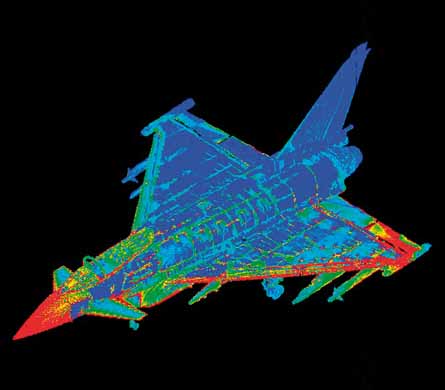Studies previously involved subjecting actual production aircraft to electrical charge
Computer modelling of aircraft lightning-strike resistance has been approved by the UK Ministry of Defence for acceptance testing of its Tranche 2 Eurofighter Typhoons. On average, aircraft in service are struck by lightning once a year.
Since 2004 BAE Systems has used its Lightning Analysis Facility (LAF) to simulate and test the response of the Typhoon to lightning strikes. Up to 26 different lightning strike scenarios can be tested with the system.
|
|---|
Computer modelling can replicate up to 26 lightning strike scenarios |
BAE Systems estimates a cost saving for the Eurofighter programme of up to £2 million ($3.9 million) for testing that previously involved subjecting an actual production aircraft to a 200,000 amp strike. Such tests can take up to eight months to complete, says the company.
LAF uses a powerful parallel-processing computer and BAE's own software to produce a virtual replica of the aircraft including all of its carbonfibre and metal components. BAE will use the facility to analyse future upgrades to the Eurofighter.
"[We] are to clear future upgrades by modelling alone. The Tranche 2 aircraft on production now will have modelling clearance later this year," says Christopher Jones, BAE's lightning, electromagnetic pulse and computational electromagnetics consultant.
LAF is also being used to study the RAF's BAE Nimrod MRA4 maritime reconnaissance and attack aircraft, he says. The company is talking to Airbus about possible uses of the facility, but there is no discussion regarding its use for the Airbus Military A400M.
Source: Flight International
























